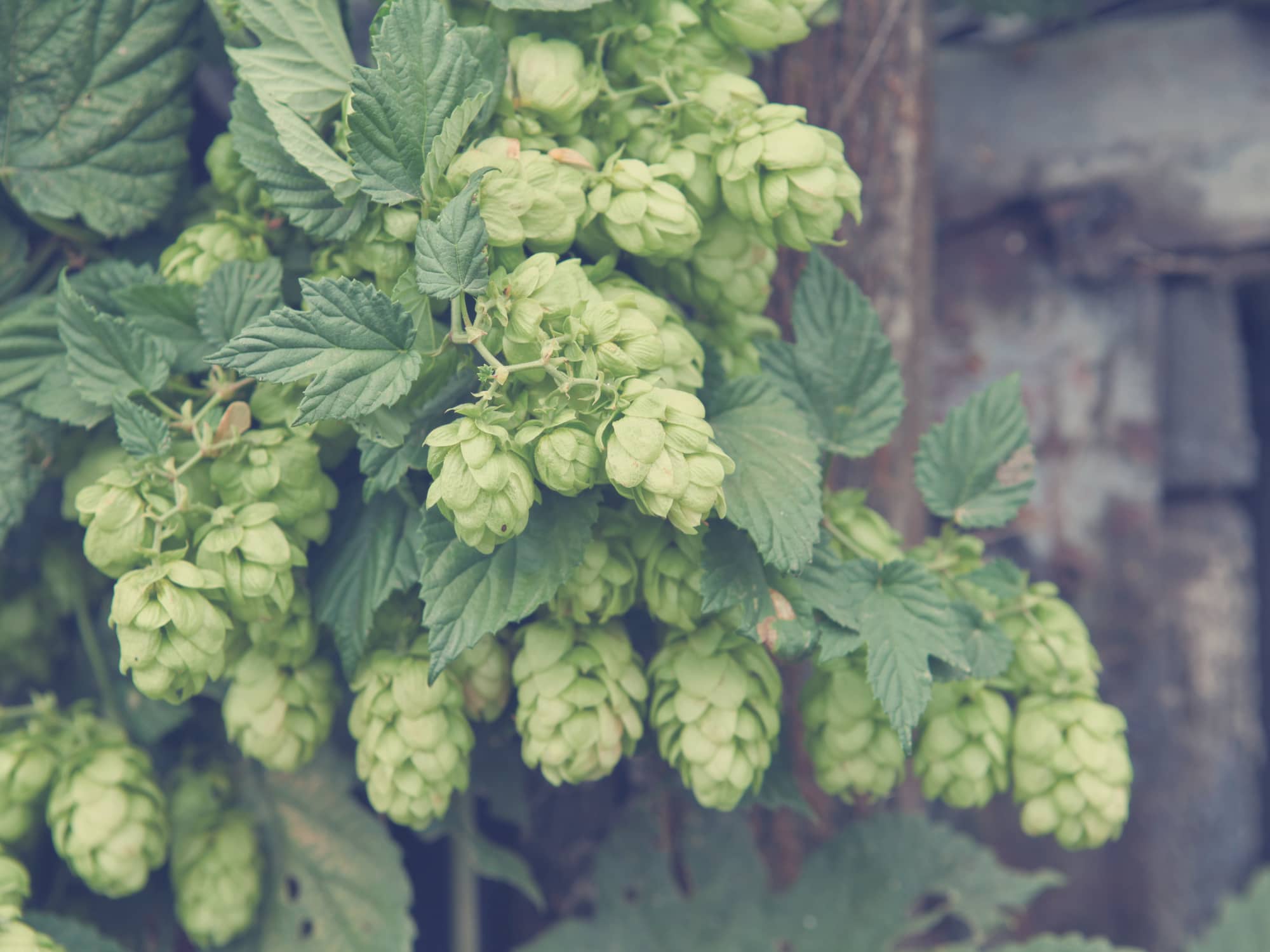Hey Everybody,
Our beer lineup at Old Nation has always been super varied in the Pub as we train new brewers on old styles and new projects, but our breadth of styles in stores and restaurants has been pretty limited the last couple of years as we grew into the monster that M-43 has become. We couldn’t be more pleased to be making more of that beer every month and seeing new folks from Denver to Athens (Georgia and Greece!) come to enjoy it.
The success of our New England IPA series allowed us some room in the Williamston and Detroit production facilities to fiddle around with one new style and two really old ones that we thought had something in common. These were the Brut IPA and Dry Honey Saison in our Woodshed Pilot series (a series where we “road test” beers we like, to find out if the craft beer climate is right for them or not) and the new Old Nation Helles, a deeply traditional and revered style of lager in central Europe that I’ve been brewing professionally for 18 years.
The reason for the strange title of this post is that, a) I like a song with a similar title a lot and, b) It’s kind of tough to explain why we chose the beers we did for the summer series this year. Instead of “word walling” about the philosophy behind this decision I’ll just describe the beer and wrap it up after, so here goes:
The Brut in the Woodshed Series represents a new style of IPA which we assumed was a West Coast (where the style started to gain popularity in 2017) response to the increasing popularity of New England IPA. Therefore, we decided to approach it as we would if fighting against New England IPA was our goal.
- We knew that Brut IPA iterations we’d tasted from the West Coast had low bitterness, same as NEIPA.
- We knew that they relied on huge amounts of the same hops NEIPAs use, mostly.
- We knew that they used a suite of amylase and other enzymes to break what would be residual starches and unfermentable sugars down into fermentable sugar, ostensibly leaving little or no residual sugar and extremely low carbohydrates in the finished beer, which would be very dry
- We knew that the citrus and tropical fruit notes from the hops would suggest a balancing sweetness to the palate but still very, very little bitterness could be allowed.
Our questions were:
- If we’re right, and Brut IPA is a direct response to the popularity of New England IPA, did those cagey brewers in California just take an NEIPA recipe and alter it simply to become a brut?
- If that works, can we do a brut with our favorite hop suite for NEIPA (that’d be the one we put in M43)?
Long story short, we cut a few malts out of the M43 (those which were causing the bulk of the haze and the soft mouthfeel, etc.), added an enzyme suite which has been used in the Mash portion of the manufacture of whiskey forever and – although we did use more hops per BBL in the brut – kept the same hop schedule and suite from the M43.
We think we were right, and the users of the Untappd app have kept us as one of the top 10 in the style since we came out with the beer.
The value of the Brut we didn’t see at first was it’s utility to athletes and those who count the carbohydrate Macro very closely. We like the beer just because it’s good, but at 3g of carbohydrates, 7% ABV and zero residual sugar it’s perfect for folks who have been drinking vodka or a low carb Macro beer to keep their carbs in check. We hope our Crossfit friends will be able to come back to beer, if they ever left!
It’s selling and rating well. I think we’ll graduate it out of the woodshed series soon, so stay tuned for that.
The Dry Honey Saison is a fairly traditional Saison grain bill, hop type and rate, and fermentation style. The addition of both a small amount of specialty malt which has a honey-like character and a lot of actual clover honey adds both a dryness and a faint honey flavor to the already complex clove, heather and spice notes from the yeast. Saisons almost never sell well, and folks are notoriously hard on them (and often confused about what they are actually supposed to be), but this one is doing pretty well. We’ll see if it graduates the Woodshed series or goes back in the “good recipe” file for another time or place.
The Shrine
Helles Lager is something I’m so happy to put out. I’ve been making this kind of beer professionally since Berlin in 2002, and I love it. For me, and for many professional brewers, Helles and Pilsener beer are kind of the holy grail of brewing, because of their extreme subtlety. In a strictly traditional sense, a Helles or pils recipe would have one type of malt (a pils base malt of some manufacture, commonly malted 6 row barley), one type of hop (a hallertau/bohemian noble hop like saaz, tettnang, Hallertau-Hallertau, etc.) water and one of several Lager yeasts. That’s it.
From the brewer’s perspective, there’s the further complication that the real point of these lagers is perfect balance. It’s rarely achieved and, frankly, only interesting to brewers who also generally prefer lagers of this style to be just slightly imperfect, over-favoring malt or hops; but these slides to one direction or the other are subtle and often unnoticeable to the “uninitiated” palate. That’s why, no matter how true it is that I put 17 years into this recipe, elbowed my way into a Detroit contract facility (whom we partner with to make some M-43) to commandeer a 200bbl tank for 5 months and no matter how extremely happy I am with how it turned out, a lot of reviews will say “meh it’s a lager”. It’s an active joke amongst brewers that, even if you objectively made a pils or helles which met every exacting standard and was objectively one of the finest on earth, a word cloud of its reviews would feature “meh” most prominently.
This isn’t because brewers want to poke fun at folks, it’s just that lagers have suffered so much in the US in the last 70 years under the consolidation and near hegemony achieved by “Industrial” lager manufacturers here. They have been brewing an industrial adjunct lager; meaning rice and/or corn syrup are added to the barley malt for flavorless alcohol production during fermentation, and fermentation times which, while strictly and scientifically controlled to achieve all basic functions of a lager fermentation, leave something to be desired in refinement, to say the least. Then they call the resulting beer a “Pilsener”, which it is patently not; any more than Nickelback is the Jimi Hendrix experience because they both use guitars to play rock & roll.
That’s not to say those beers are “bad”, though. In fact, the level of control in raw materials, process, supply chain through distribution and marketing savvy those brewers have is incredible; as is the fact that they can make a very light bodied beer, with very little room for “hiding” off flavors, the exact same out of 12 different breweries in the US across millions of barrels of beer per year. It’s just that I don’t drink beer because I appreciate it’s supply chain, you know?
In an IPA, for example, I want to taste the balance the brewer prefers for her iteration. I want to see if this brewer favors deep malt, as most of us in the Midwest learned from Larry Bell to do, or if that one prefers very little malt, high bitterness and high aroma as West Coast brewers have done for some time. What hop variety/suite did this guy pick, and how ballistic does he intend to be? Each beer has its place, and whether the brewer’s taste lines up with mine is immaterial to me. If the beer is mostly clean, interesting for some reason and “works”, I’m in.
There’s a different expectation of “balance” in every style, and I think that’s what gets some folks into trouble with beer. That trouble gets them stuck in a rut where they’ll only ever drink one style, or a couple, for whatever reason. “I don’t like X style, so I don’t like this beer” is another joke to, particularly older, brewers like me. It’s our job, at the end of the day, to find out the “heart” of any style, try to “get on top” of whatever the heart of that beer is, and change it to suit what we think we want, or our customers want, or the person who dared us to brew it would want, or whatever. It is, frankly, the most pure fun you can have as a brewer, to me. To “figure out” a style and say, “but what happens when we change this small thing”? After a few iterations, you get what you didn’t understand and can begin to build a style in your own brewery that suits you, for whatever reason. After a few more, your process is “keyed in” and you can see what other people think outside of your pub. It’s always a bummer when folks don’t care for your beer because they don’t understand what you were trying to do, and in these times of “bigger is better”, balance and subtlety are no longer the currency of the marketplace.
I think that as today’s craft beer drinkers mature and start branching out into classic styles, balance and subtlety will be as important as “hoppy”, “Malty” and High ABV are today. You can fake a lot of stuff as a brewer and, like in music, the louder things are around you, the less folks can tell you made a mistake. Quiet, subtle styles can’t be faked and require discipline and dedication to your trade. I think that will be their currency in the future, but it’ll take people slowing down and really paying attention.
At some point, teasing out the subtle differences in a beer which is 5% ABV and which you know from your first sip isn’t going to give you a hangover that you don’t earn is fun for a lot of folks who have been at this for a while. The kids may still think it’s boring, but I have hope.
I made the Helles to be the best example of a really exacting style with a high degree of difficulty. Balanced beer, drinkable beer, for summer, but still “Craft”. We made the Dry Honey Saison and Brut the same way. I’m hoping you’ll appreciate all of the flavors in all three, but particularly the balance. In my humble opinion without that, you don’t have beer, no matter what kind you’re making.
Thanks for staying with me,
Travis



